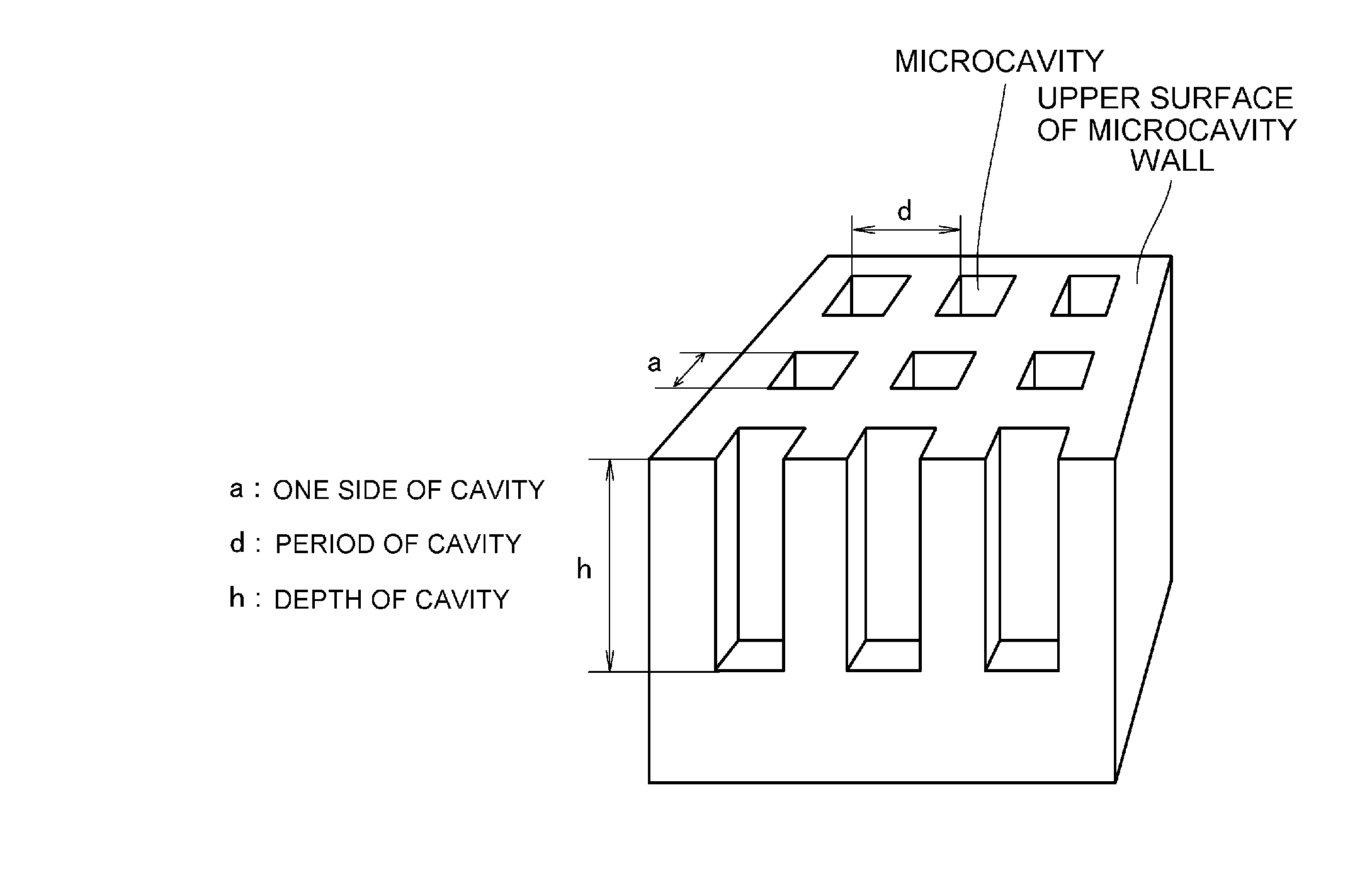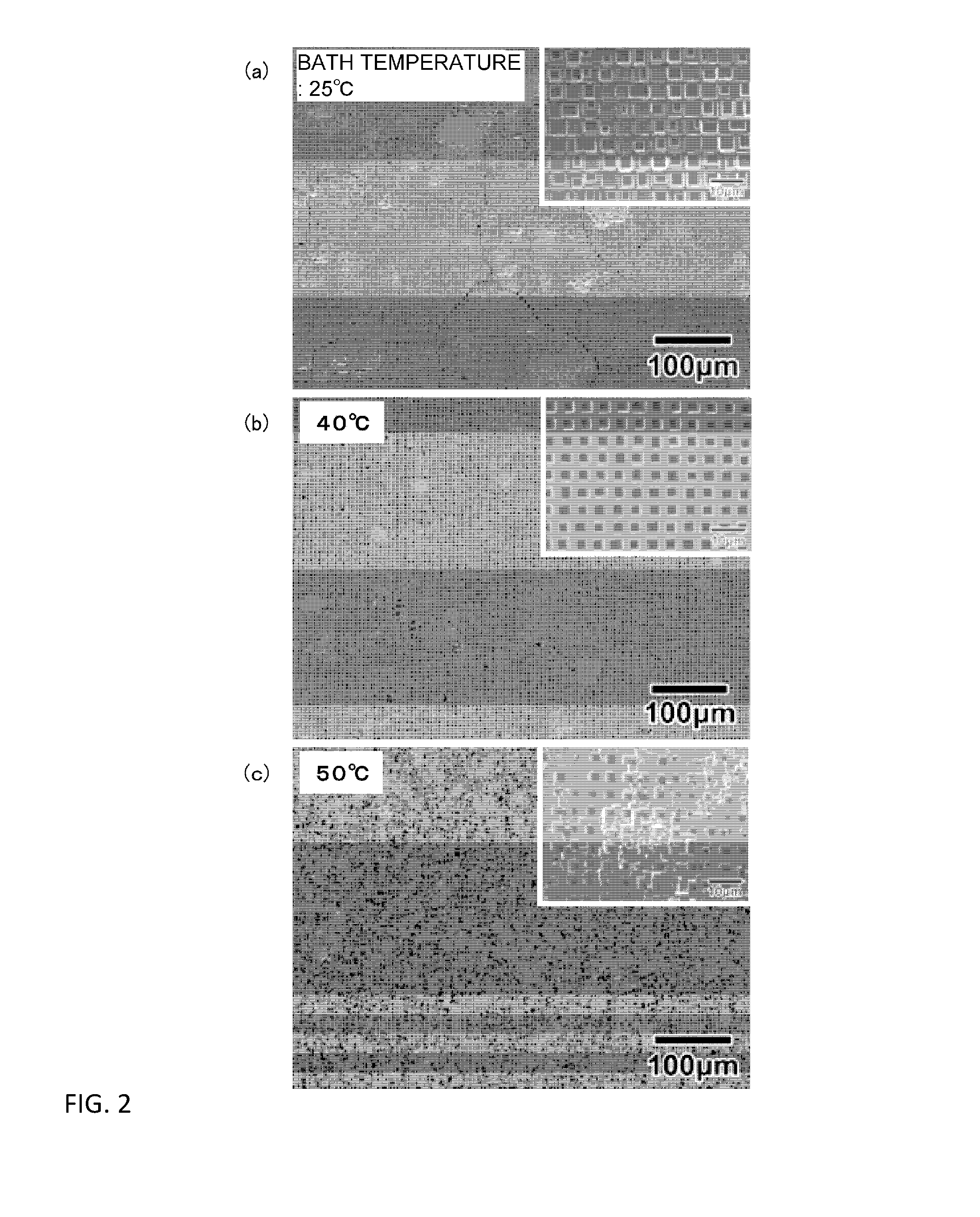Wavelength selective heat radiation material selectively radiating heat radiation light corresponding to infrared ray transmission wavelength region of resin member and method for manufacturing the same
- Summary
- Abstract
- Description
- Claims
- Application Information
AI Technical Summary
Benefits of technology
Problems solved by technology
Method used
Image
Examples
example 1
[0070]An aluminum foil whose area occupancy ratio of a (100) crystal plane of a surface was 93% or more was used, said aluminum foil was subjected to electrolytic polishing by using a perchloric acid / ethanol bath, and thereafter, a neoprene thin film layer having a structure in which fine pores each having a size of 2 μm were regularly arrayed at intervals of 5 μm was caused to tightly adhere to the surface thereof for formation. Copper was attached to said aluminum foil by conducting a sputtering process; thereafter, by using an electrolytic bath having a bath temperature of 25° C. and containing a 7M hydrochloric acid aqueous solution, electrolytic etching to the resultant was conducted under the conditions that a current density upon starting electrolysis was 1500 mA / cm2 and after decreasing the current density at a current density decrease rate of 150 mA / cm2 / s up to 200 mA / cm2, the current density of 200 mA / cm2 was retained for 15 seconds. Thereafter, the resultant was immersed ...
example 2
[0071]Under the same conditions as in Example 1, except that the bath temperature of the electrolytic bath was 30° C., electrolytic etching was conducted, thereby obtaining a wavelength selective heat radiation material in which microcavities each having a length a of one side of 3 μm and an opening ratio a / Λ (a: opening size, Λ: opening period) of 0.6 were formed.
example 3
[0072]Under the same conditions as in Example 1, except that the bath temperature of the electrolytic bath was 35° C., electrolytic etching was conducted, thereby obtaining a wavelength selective heat radiation material in which microcavities each having a length a of one side of 3 μm and an opening ratio a / Λ (a: opening size, Λ: opening period) of 0.6 were formed.
PUM
| Property | Measurement | Unit |
|---|---|---|
| Temperature | aaaaa | aaaaa |
| Temperature | aaaaa | aaaaa |
| Temperature | aaaaa | aaaaa |
Abstract
Description
Claims
Application Information
 Login to View More
Login to View More - R&D
- Intellectual Property
- Life Sciences
- Materials
- Tech Scout
- Unparalleled Data Quality
- Higher Quality Content
- 60% Fewer Hallucinations
Browse by: Latest US Patents, China's latest patents, Technical Efficacy Thesaurus, Application Domain, Technology Topic, Popular Technical Reports.
© 2025 PatSnap. All rights reserved.Legal|Privacy policy|Modern Slavery Act Transparency Statement|Sitemap|About US| Contact US: help@patsnap.com



